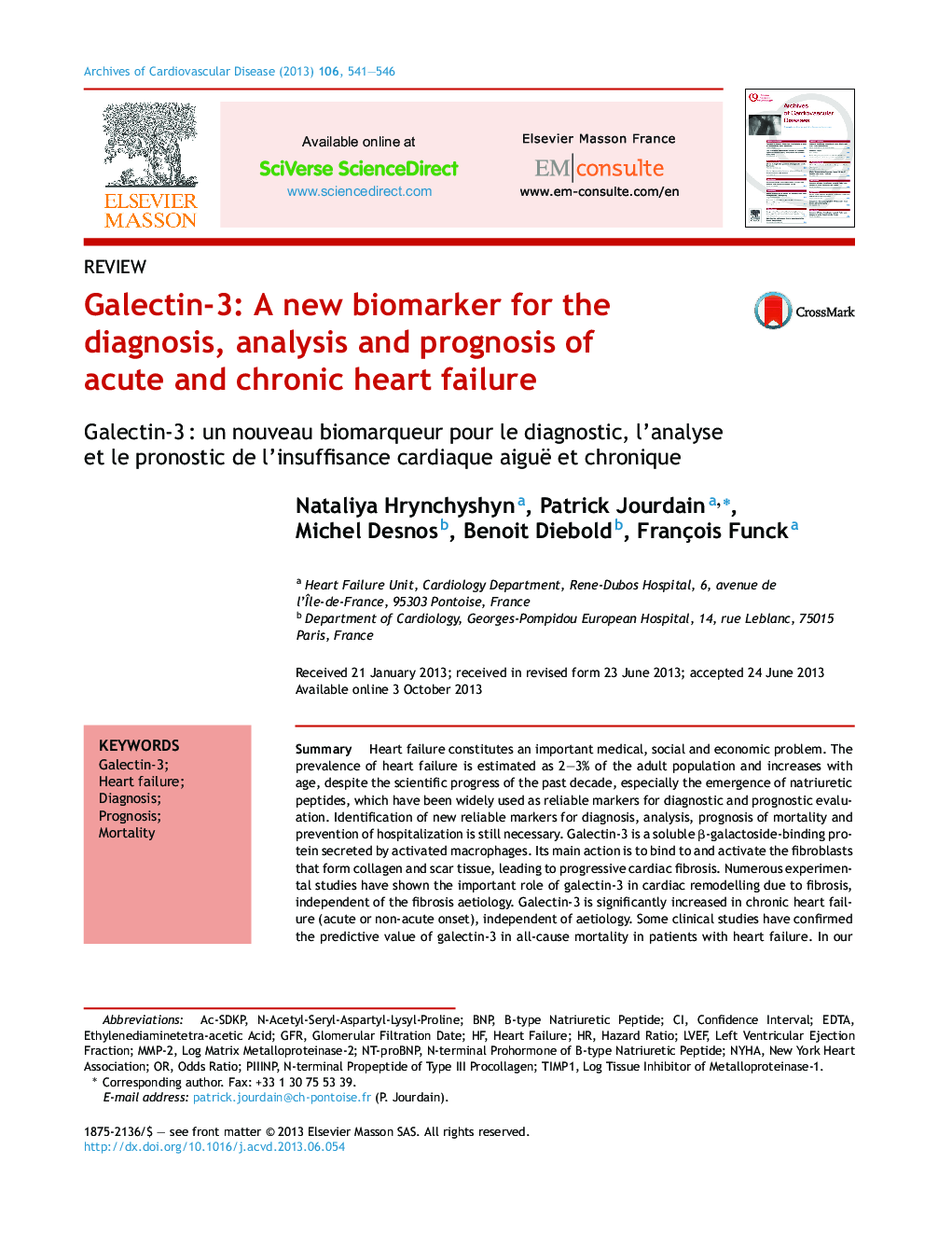| کد مقاله | کد نشریه | سال انتشار | مقاله انگلیسی | نسخه تمام متن |
|---|---|---|---|---|
| 2888734 | 1574361 | 2013 | 6 صفحه PDF | دانلود رایگان |

SummaryHeart failure constitutes an important medical, social and economic problem. The prevalence of heart failure is estimated as 2–3% of the adult population and increases with age, despite the scientific progress of the past decade, especially the emergence of natriuretic peptides, which have been widely used as reliable markers for diagnostic and prognostic evaluation. Identification of new reliable markers for diagnosis, analysis, prognosis of mortality and prevention of hospitalization is still necessary. Galectin-3 is a soluble β-galactoside-binding protein secreted by activated macrophages. Its main action is to bind to and activate the fibroblasts that form collagen and scar tissue, leading to progressive cardiac fibrosis. Numerous experimental studies have shown the important role of galectin-3 in cardiac remodelling due to fibrosis, independent of the fibrosis aetiology. Galectin-3 is significantly increased in chronic heart failure (acute or non-acute onset), independent of aetiology. Some clinical studies have confirmed the predictive value of galectin-3 in all-cause mortality in patients with heart failure. In our review, we aim to analyse the role of galectin-3 in the development of heart failure, its value in screening and clinical decision making and its possible predictive application in follow-up as a “routine” test in an addition to established biomarkers, such as B-type natriuretic peptide and N-terminal prohormone of B-type natriuretic peptide.
RésuméL’insuffisance cardiaque reste en dépit des dernières avancées médicales une pathologie fréquente, grave et coûteuse. De ce fait, l’identification de marqueurs alternatifs ou complémentaires au dosage des peptides natriurétiques reste un élément crucial dans la prise en charge de cette pathologie que ce soit pour le diagnostic, l’analyse pronostique ou le suivi des patients. La galectine-3 est une protéine sécrétée par les macrophages activés. Son action principale est de se lier et d’activer les fibroblastes qui vont sécréter du collagène et former ainsi un tissu cicatriciel qui conduit à une fibrose cardiaque progressive. De nombreuses études expérimentales ont mis en avant le rôle clef de la galectine-3 dans le remodelage fibrotique myocardique. Cette revue des données actuellement existantes porte sur l’analyse des possibilités offertes par le dosage de ce marqueur sur les plans diagnostique, pronostique et éventuellement en tant qu’outil d’aide au monitoring en association aux marqueurs actuellement recommandés dans l’insuffisance cardiaque aiguë ou chronique.
Journal: Archives of Cardiovascular Diseases - Volume 106, Issue 10, October 2013, Pages 541–546